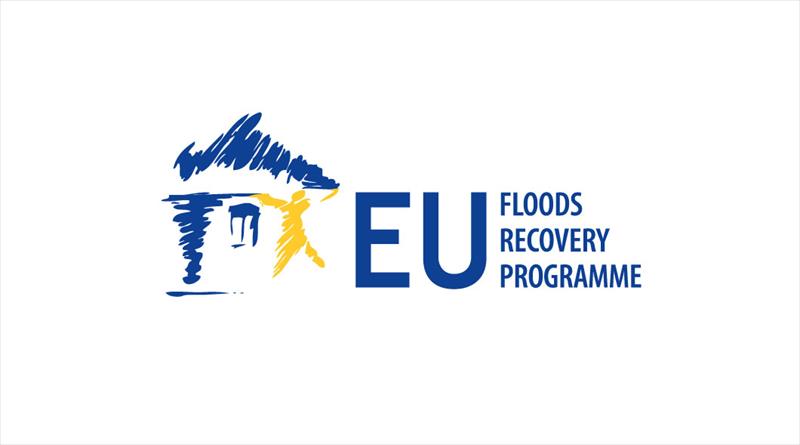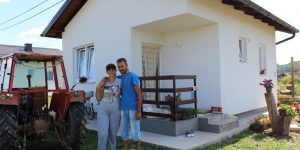The importance of the social welfare system increases in the aftermath of natural disasters, and it was no different in Bosnia and Herzegovina after the devastating floods in May 2014. The European Union’s Floods Recovery Programme has therefore prioritised the rehabilitation of Social Welfare Centres in the flood-affected areas – together with educational and health care institutions. As a result, the Social Welfare Centres in Bijeljina, Doboj, Maglaj, Olovo and Šamac are benefitting from the EU’s flood recovery support.
The overall EU investment for the post-flood rehabilitation of the social welfare sector amounts to nearly 200,000 EUR (400,000 KM). The EU financing has already produced results on the ground, and as of last week the Social Welfare Centre in Doboj is again offering its services to the citizens in fully rehabilitated premises. The EU has financed the installation of new flooring throughout the building, exchange of the outdoor carpentry, electric installations and lighting fixtures, as well as restoration of the sanitary system. As an additional feature, a driveway and a ramp for people with special needs has been installed to facilitate access. “We are content with the quality of works and grateful to the EU for their assistance,” said Danka Sušić, Director of the Social Welfare Centre Doboj.
The Social Welfare Centre in Bijeljina was also able to restart operations in September when the EU-financed rehabilitation works were completed. In Maglaj, the rehabilitation of the Centre is getting underway with the ground floor and the façade being refurbished with EU support. The rehabilitation works in the Centre in Šamac are yet to start, as the damage suffered by Centre was so extensive that the building needs to be rebuilt from the ground up.
“The assistance provided by the EU is very generous. We are hopeful that the works will start soon since the temporary premises we are using now in the municipal building are not accessible to our clients with special needs,” said Veljko Milikić, Director of the Social Welfare Centre Šamac. Despite challenges, the personnel of the Centre managed to maintain the provision of services to its users during and after the floods. When the floodwaters withdrew, the priority for the Centre was to update the user records by adding hundreds of new beneficiaries who lost their homes and jobs due to the floods and to assess their social assistance needs.
The need assessments done by the Centre in Šamac and also in other flood-affected locations have benefitted the implementation of the EU Floods Recovery Programme: “Our close cooperation and consultations with the Social Welfare Centres have ensured that the EU support is able to target those who need assistance the most. User records and needs assessments prepared by the Centres have greatly facilitated the identification of vulnerable families to be included in our emergency housing rehabilitation support,” said Andy McGuffie, Spokesperson of the EU Delegation to BiH and EU Special Representative Office.
The EU Flood Recovery Programme: The Programme was launched to restore normal living conditions in local communities and ensure that the aid reaches the most vulnerable ones in the aftermath of floods in May. Funds will be used to restore public services and infrastructure, reconstruct housing units for the most vulnerable ones, and for social and economic recovery of local communities. The value of the overall programme was 43.52 million, of which 42.24 million were provided by the European Union. The programme is implemented by the United Nations Development Programme (UNDP), the United Nations Children’s Fund (UNICEF) and the International Organisation for Migration (IOM).
For more information, visit the EU Floods Recovery Programme feature page




